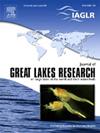Stable C and N isotope analyses redefine cisco as pelagic piscivores in Lake Michigan
IF 2.4
3区 环境科学与生态学
Q3 ENVIRONMENTAL SCIENCES
引用次数: 0
Abstract
Lake Michigan’s cisco (Coregonus artedi) population is in the midst of an expansion (2011-present) recovering from near extirpation levels observed in the 1970 s. Strong evidence of piscivory derived from observed diet analyses suggests the population may occupy a unique trophic position relative to typical expectations for the species. To verify these observations, cisco and their prey were collected from 2017 to 2020 for stable C and N isotope analyses. Leveraging existing stable isotope datasets for Lake Michigan, the trophic position of cisco was assessed by quantifying the isotopic niche space occupied relative to common salmonine piscivores and prey fish species. Diet mixing models were constructed to estimate the relative importance of potential prey sources to cisco diets. Results suggested that cisco occupied an isotopic niche similar to Pacific salmonines (Oncorhynchus spp.) and brown trout (Salmo trutta) that are mainly piscivorous. Conversely, there was low isotopic niche overlap with prey fish species that are mainly planktivorous. Mixing models suggest greater reliance on pelagic prey sources (including alewife Alosa pseudoharengus and Bythotrephes longimanus) in cisco diets when compared with observations of stomach contents. Under the present ecological conditions in Lake Michigan, it appears that adult cisco in this population occupy the trophic role of a pelagic piscivore.
求助全文
约1分钟内获得全文
求助全文
来源期刊

Journal of Great Lakes Research
生物-海洋与淡水生物学
CiteScore
5.10
自引率
13.60%
发文量
178
审稿时长
6 months
期刊介绍:
Published six times per year, the Journal of Great Lakes Research is multidisciplinary in its coverage, publishing manuscripts on a wide range of theoretical and applied topics in the natural science fields of biology, chemistry, physics, geology, as well as social sciences of the large lakes of the world and their watersheds. Large lakes generally are considered as those lakes which have a mean surface area of >500 km2 (see Herdendorf, C.E. 1982. Large lakes of the world. J. Great Lakes Res. 8:379-412, for examples), although smaller lakes may be considered, especially if they are very deep. We also welcome contributions on saline lakes and research on estuarine waters where the results have application to large lakes.
 求助内容:
求助内容: 应助结果提醒方式:
应助结果提醒方式:


